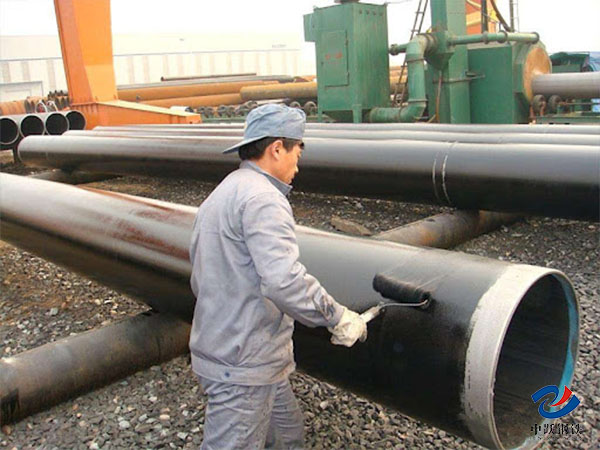With the rapid development of social science and technology, the demand for oil and natural gas is increasing day by day, and there are more and more anti-corrosion measures for oil pipelines and natural gas pipelines. The emergence of many new processes and new materials provides an important guarantee for the anti-corrosion treatment of oil and natural gas pipelines.

Why are pipes corroded?
The main cause of pipeline corrosion is due to chemical, electrochemical reaction and environmental factors. Common causes of pipeline corrosion are mainly the following:
1. Internal corrosion
The corrosion inside the pipeline is mainly affected by the transport medium, such as the transport of acidic, alkaline gases or liquids and substances containing salt.
2. External corrosion
The external corrosion of pipeline is mainly affected by atmosphere and soil. For example, the buried pipeline will accelerate the corrosion of the pipeline surface due to long-term contact with wet soil, while the open pipeline may be exposed to oxidative corrosion in a humid and high-temperature environment.
3. Increased corrosion caused by damage
The pipe is subjected to tensile stress for a long time, which may crack and increase the rate of corrosion, or the metal surface is washed when the sand-bearing fluid is transported, destroying the passivation layer and increasing the corrosion of the pipe.
The main method to solve pipeline corrosion
1. Choose materials that are resistant to corrosion
Select the appropriate pipe, considering the transport medium, temperature, pressure and other factors, choose better corrosion resistance materials, such as
stainless steel, alloy steel or plastic pipe.
You can also use inner village or composite pipe, such as inner village PE, glass fiber reinforced plastic, rubber, etc., to improve corrosion resistance.
2. Coating and paint protection
Use external anti-corrosion coatings, such as Fusion Bonded Epoxy (PBE),
polyethylene (3PE) coating, etc., to prevent corrosion caused by environmental factors.
Use internal anticorrosive coatings such as EPOXY resin, cement mortar, PTFE (Teflon), glass flake coating, etc. The internal anti-corrosion coating can effectively reduce the corrosion of fluid to the pipe wall and improve the service life of the pipe.
Thermal spraying (such as hot spray zinc, hot spray aluminum), mainly used in high temperature, high corrosion environment, such as seawater pipeline.
3. Chemical treatment
Add corrosion inhibitors: Add corrosion inhibitors to the fluid to reduce the corrosion rate inside the pipe.
Adjust PH value: Control the pH of water quality or chemical medium to reduce acid corrosion.
Deoxidation treatment: removal of oxygen in water or gas to prevent oxidative corrosion.
4. Regular monitoring and maintenance
Regularly monitor the wall thickness changes of the pipeline to detect corrosion problems in time.
Ensure electrochemical protection, such as cathodic protection and anode protection, monitor their potential changes to ensure that the protection system is working effectively.
Check the PH, oxygen and fluoride content of the fluid regularly.
Corrosion damage should be repaired in time.
Summary
The corrosion protection of the pipeline needs to be integrated with materials with certain corrosion resistance, as well as reasonable treatment and protection, so as to ensure the long-term safe and reliable operation of the pipeline.
